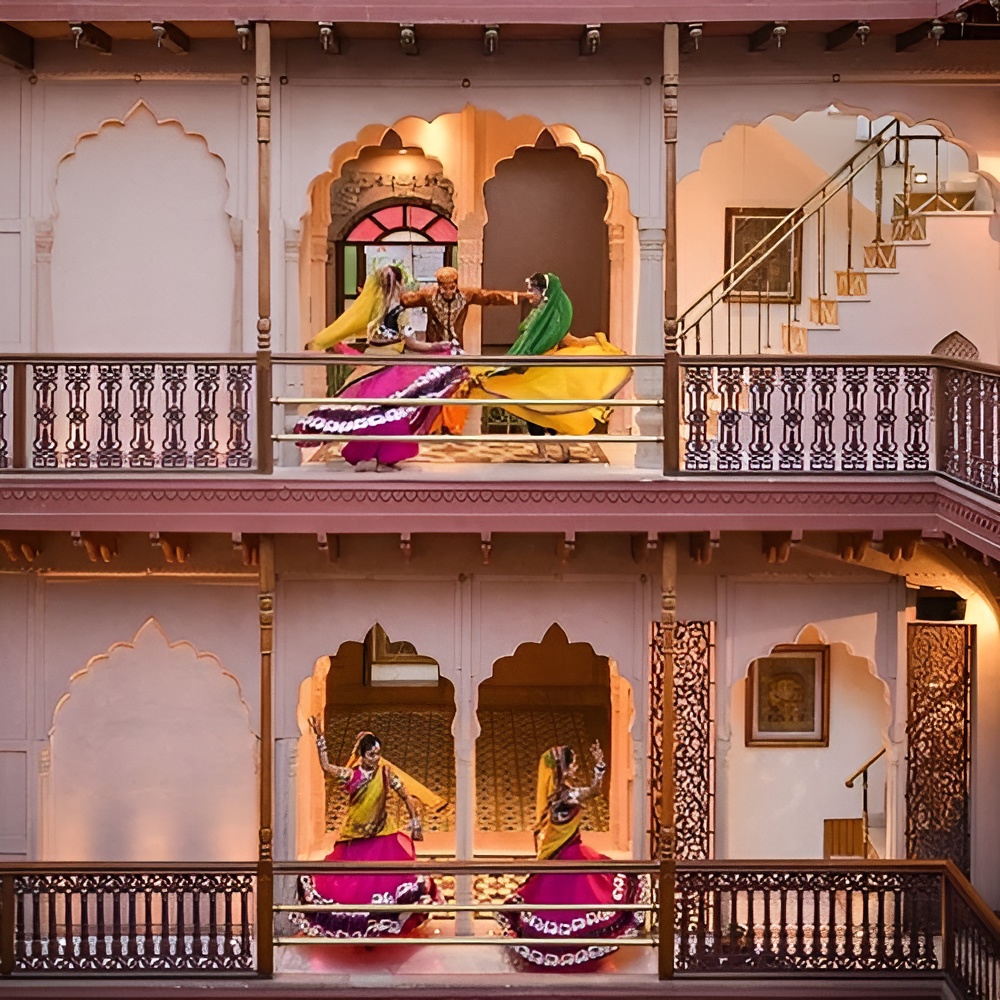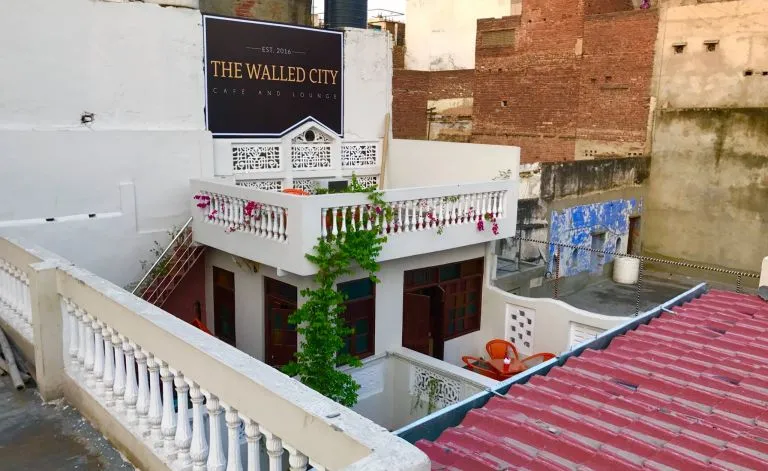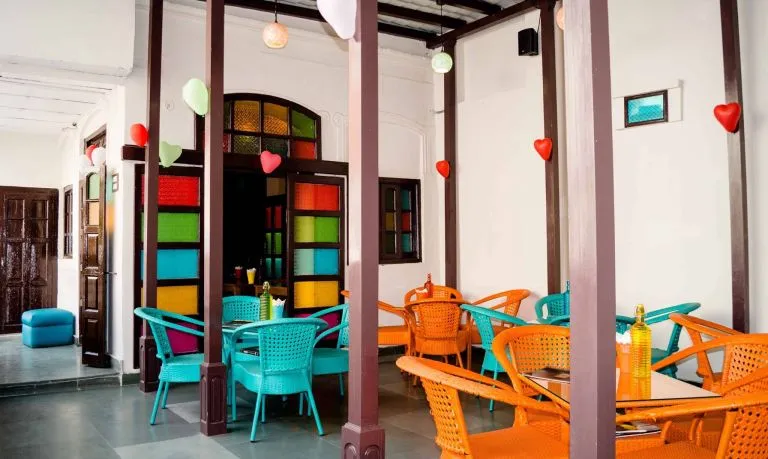Reviving Delhi’s heritage: From havelis to cafes

The Dharampura Haveli Cafe stands as a testament to the city's rich heritage (Photo: Dharampura Haveli)
The crowded, narrow lanes and by-lanes of Old Delhi are best known for housing architectural and heritage marvels like the Jama Masjid, the Red Fort and the numerous Gates of the Walled City. But beyond these well-known and to some extent well-preserved monuments, there are other buildings and sites that have long stood there, but now lie in decrepit condition.
Among these are numerous ancient mansions that were once the residences of aristocrats and nobles of Delhi. While many of them continue to lie in a state of disrepair or crumbling, a few have found new life as havens for food one such haveli is Dharampura Haveli, situated in the narrow lanes of Chandni Chowk, one of Delhi’s oldest and busiest markets.
The haveli, also known as Goel Saab ki Haveli, was built in 1887 but was once declared a dangerous building by the Municipal Corporation of Delhi. Due to decades of neglect, its ancient wooden foundation had weakened. Rajya Sabha MP Vijay Goel and his son Siddhant Goel, took this as an opportunity to give the history of Delhi a bright future. In collaboration with WelcomHeritage, a brand of ITC Hotels, they transformed a crumbling haveli into an epitome of Delhi’s opulent past.

Dharampura Haveli organises weekly kathak dance and classical music performances (Photo: Dharampura Haveli website)
Once a majestic mansion echoing with the whispers of history, it has now been lovingly transformed into a bustling cafe, breathing new life into its age-old corridors, it organises weekly kathak dance and classical music performances where artistes from Delhi’s musical gharanas come to play.
The Goels say that it was the first such haveli to be completely restored in the last 100 years. It took them six years and a team of 50 skilled workers to transform the haveli into what it looks like today. The haveli now stands completely restored and has also bagged an award from UNESCO.
Today, the Dharampura Haveli Cafe stands as a testament to the city’s rich heritage. Its weathered façade, adorned with ornate carvings and majestic archways, draws visitors into a world where time seems to stand still.
As people enter the haveli’s grand entrance, they are greeted by a fusion of old-world elegance and modern comfort. The courtyard, once a haven for the aristocrats of yesteryears, now serves as a tranquil oasis where guests can unwind with freshly brewed coffee.
“Dharampura gets its name from the plethora of religious institutions it houses, reflecting our diverse cultural tapestry. From Jain temples to Hindu shrines, alongside a masjid and a nearby church, the area resonates with spiritual harmony. As a local guide, I am proud to share this vibrant heritage with visitors, showcasing the coexistence of faiths that define our community. Each temple, mosque, and church tells a story of devotion and unity, enriching the tapestry of Dharampura’s history. Exploring these sacred sites offers a profound insight into the soul of our neighbourhood, where reverence and respect intertwine seamlessly,” Ravi Kumar 34, a local guide tells Media India Group.
“The haveli offers much more than just hotel rooms or restaurants. Here, visitors can immerse themselves in the culture of Old Delhi through classical music and Kathak performances, heritage walks, and cooking classes,” Kumar adds.

Dharampura Haveli’s restaurant is renowned for its diverse menu featuring delicious traditional Indian and Mughlai cuisine (Photo: Dharampura Haveli website)
The haveli is known for its pretty central courtyard and a rooftop offering panoramic views of Old Delhi, including the iconic Jama Masjid. Its restaurant is renowned for its diverse menu featuring delicious traditional Indian and Mughlai cuisine. Guests can indulge in an array of flavours that reflect the rich culinary heritage of the region, offering a delightful gastronomic journey within the historic walls of the haveli.
“Having frequented Dharampura Haveli for months, I can confidently say: their food is simply unbeatable. It has become my sanctuary, my go-to place whenever I need a pick-me-up. There is something about this place that transcends mere dining, it is a haven where every bite soothes not just my taste buds, but also my soul. In times of distress or simply when I crave comfort, Dharampura Haveli is where I find peace. It is more than just a restaurant, it is my refuge,” Sana Hassan, a student in Delhi, tells Media India Group.
Another haveli has been restored has been rechristened as the Walled City and which claims to be the first and only urban Cafe in Old Delhi, near Jama Masjid.

Walled City claims to be the first and only urban Cafe in Old Delhi, near Jama Masjid ( Photo : Walled City Facebook)
The joint efforts of a family have breathed new life into the 200-year-old mansion, transforming it into a modern cafe and lounge named Walled City.

Sheeba Aslam Fehmi
Sheeba Aslam Fehmi, a writer, who is one of the minds behind the transformation, says the idea struck her out of the blue. “The haveli belonged to my husband’s elder sister. They are settled in Canada and the mansion had been vacant for almost 12 years, and it was crumbling down. She asked us to get it repaired. While we were in the process and were inspecting the first floor, we realised the space could be creatively used. That is how we decided to open a cafe,” Fehmi tells Media India Group.
Skilled masons from Jaipur were enlisted for the renovation work, which proceeded smoothly as the property was privately owned and only the basic structure was retained so that it didn’t lose its original charm.
“Some Belgian glasses had to be replaced but we could not get the exact ones in India. Two of the panels are original and with the rest, we kept the colour scheme intact. We have also kept the jharokhas (small balconies) above the entrance,” she adds
“I endeavoured to create a homely ambiance, ensuring our guests feel embraced rather than merely seated in a commercial setting. It is about fostering a warm environment where every visitor feels like family, where comfort and relaxation reign supreme and whatever is left has to be respected. We have not touched the original Lakhori bricks or floors here,” Fehmi adds.
The successful restoration of old mansions like the Walled City or the Dharampura Haveli seem to have spurred others into following suit and for the past many years, heritage activists and the Delhi government have been working to conserve the havelis in the walled city.
“I see immense potential in the transformation of these havelis. This cafe sets a remarkable example amidst the shambles surrounding us. By reviving these buildings, we impart a new future to our city’s history. It is crucial for owners to approach restoration with empathy towards our rich heritage. Without this sentiment, genuine renewal and remodelling are unattainable. Each brick holds a story, and it is our responsibility to honour and preserve them, ensuring that the essence of our past continues to thrive in the present and future,” Ajay Kumar, Director of Projects, INTACH, Delhi Chapter tells Media India Group.
The transformation of Delhi’s havelis into vibrant cafes represents not just a revival of architectural splendour but also a celebration of cultural heritage. As visitors feast on the rich culinary offerings and immersive cultural experiences within these restored havelis, they become part of a narrative that honours the city’s legacy while embracing its future.










